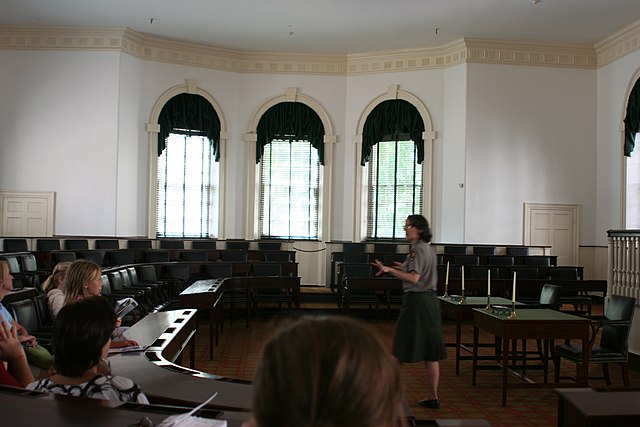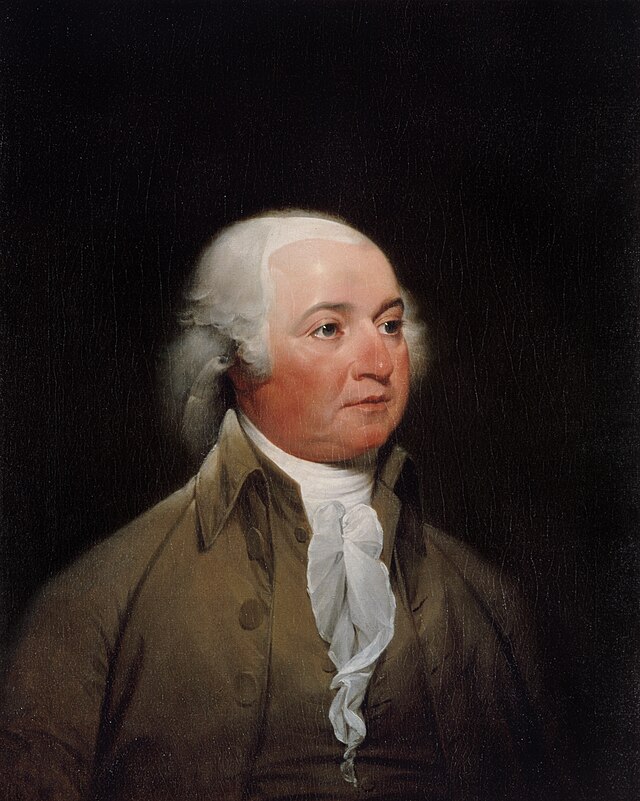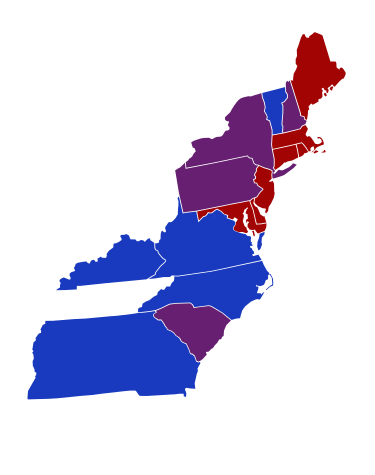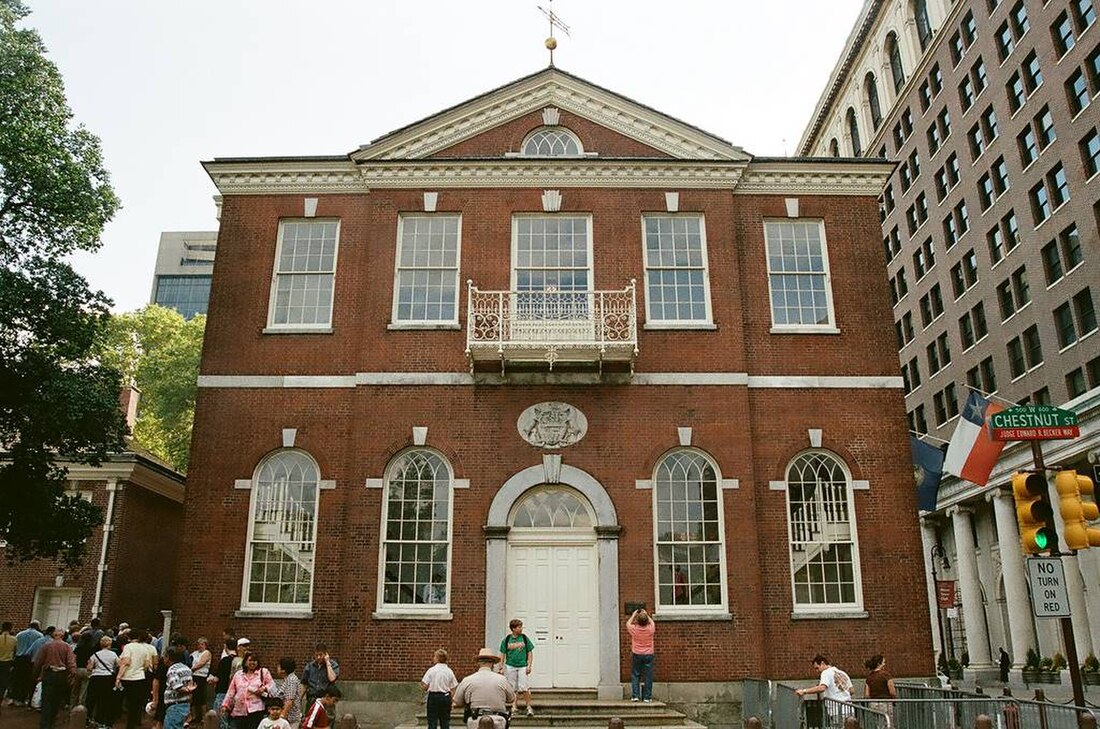Top Qs
Timeline
Chat
Perspective
3rd United States Congress
Legislative term from 1793-1795 From Wikipedia, the free encyclopedia
Remove ads
The 3rd United States Congress was a meeting of the legislative branch of the United States federal government, consisting of the United States Senate and the United States House of Representatives. It met at Congress Hall in Philadelphia, Pennsylvania from March 4, 1793, to March 4, 1795, during the fifth and sixth years of George Washington's presidency.
The apportionment of seats in the House of Representatives was governed by the Apportionment Act of 1792 and based on the 1790 census. The Senate had a Pro-Administration majority, and the House had an Anti-Administration majority.

Remove ads
Major events
- March 4, 1793: President George Washington begins his second term.
- April 22, 1793: George Washington signed the Neutrality Proclamation
- February 11, 1794: Wishing to avoid charges of being a Star Chamber, the Senate holds its first public session, resolving "That the Senate doors be opened".[1][2]
- March 14, 1794: Eli Whitney was granted a patent for the cotton gin
- March 27, 1794: The federal government authorized the construction of the original six frigates of the United States Navy
- August 7, 1794: Whiskey Rebellion began: Farmers in the Monongahela Valley of Pennsylvania rebelled against the federal tax on liquor and distilled drinks.
- August 20, 1794: Battle of Fallen Timbers — American troops under General Anthony Wayne forced a confederacy of Shawnee, Mingo, Delaware, Wyandot, Miami, Ottawa, Chippewa and Pottawatomie warriors into a disorganized retreat.

Remove ads
Major legislation
English Wikisource has original text related to this article:
- January 13, 1794: Flag Act of 1794, Sess. 1, ch. 1, 1 Stat. 341
- March 22, 1794: Slave Trade Act of 1794, Sess. 1, ch. 11, 1 Stat. 347
- March 27, 1794: Naval Act of 1794, Sess. 1, ch. 12, 1 Stat. 350
- January 29, 1795: Naturalization Act of 1795, Sess. 2, ch. 20, 1 Stat. 414
Remove ads
Constitutional amendments
- March 4, 1794: Approved an amendment to the United States Constitution clarifying judicial power over foreign nationals, and limiting the ability of citizens to sue states in federal courts and under federal law, and submitted it to the state legislatures for ratification 1 Stat. 402.
- February 7, 1795: The Eleventh Amendment to the United States Constitution was ratified by the requisite number of states (then 12) to become part of the Constitution.
Treaties
- November 19, 1794: The United States and the Kingdom of Great Britain signed the Jay Treaty, which attempted to clear up some of the lingering problems left over from the American Revolutionary War
Faction summary
There were no political parties in this Congress. Members are informally grouped into factions of similar interest, based on an analysis of their voting record.[3]
Details on changes are shown below in the "Changes in membership" section.
Senate
House of Representatives

Remove ads
Leadership
Senate

- President: John Adams (P)
- President pro tempore: John Langdon (P), until December 2, 1793
- Ralph Izard (P), May 31, 1794 – November 9, 1794
- Henry Tazewell (P), from February 20, 1795
House of Representatives
Members
Summarize
Perspective
This list is arranged by chamber, then by state. Senators are listed by class, and representatives are listed by district.
Senate
Senators were elected by the state legislatures every two years, with one-third beginning new six-year terms with each Congress. Preceding the names in the list below are Senate class numbers, which indicate the cycle of their election.
Connecticut
Delaware
Georgia
Kentucky
Maryland
Massachusetts
New Hampshire
New Jersey
|
New York
North Carolina
Pennsylvania
Rhode Island
South Carolina
Vermont
Virginia
|
 2 Anti-Administration
1 Anti-Administration and 1 Pro-Administration
2 Pro-Administration |
John Langdon (until December 2, 1793) Ralph Izard (May 31, 1794 – November 9, 1794) Henry Tazewell (from February 20, 1795)
|
House of Representatives
The names of members of the House of Representatives are preceded by their district numbers.
Remove ads
Changes in membership
Summarize
Perspective
The count below reflects changes from the beginning of the first session of this Congress
United States Senate
There were 1 death, 3 resigns, 1 late election, and 1 contested election.
House of Representatives
There were 2 deaths, 3 resignations, and 1 contested election.
Remove ads
Committees
Lists of committees and their party leaders.
Senate
House of Representatives
- Claims (Chairman: Uriah Tracy)
- Elections (Chairman: William Loughton Smith then Jonathan Dayton)
- Rules (Select)
- Ways and Means (Chairman: William Loughton Smith)
- Whole
Joint committees
- Enrolled Bills (Chairman: John Rutherfurd)
Employees
Senate
House of Representatives
See also
- 1792 United States elections (elections leading to this Congress)
- 1794 United States elections (elections during this Congress, leading to the next Congress)
Notes
References
External links
Wikiwand - on
Seamless Wikipedia browsing. On steroids.
Remove ads





